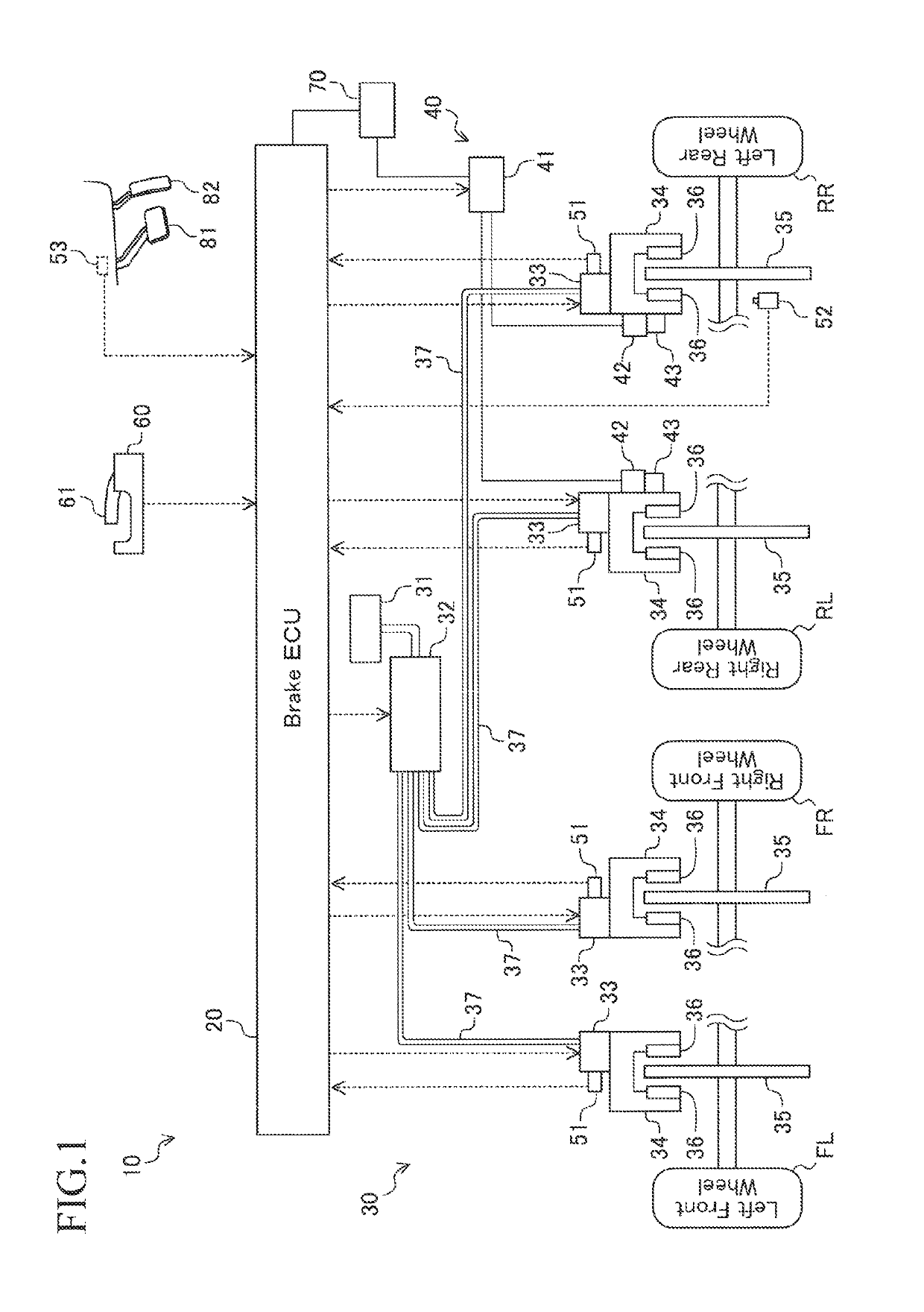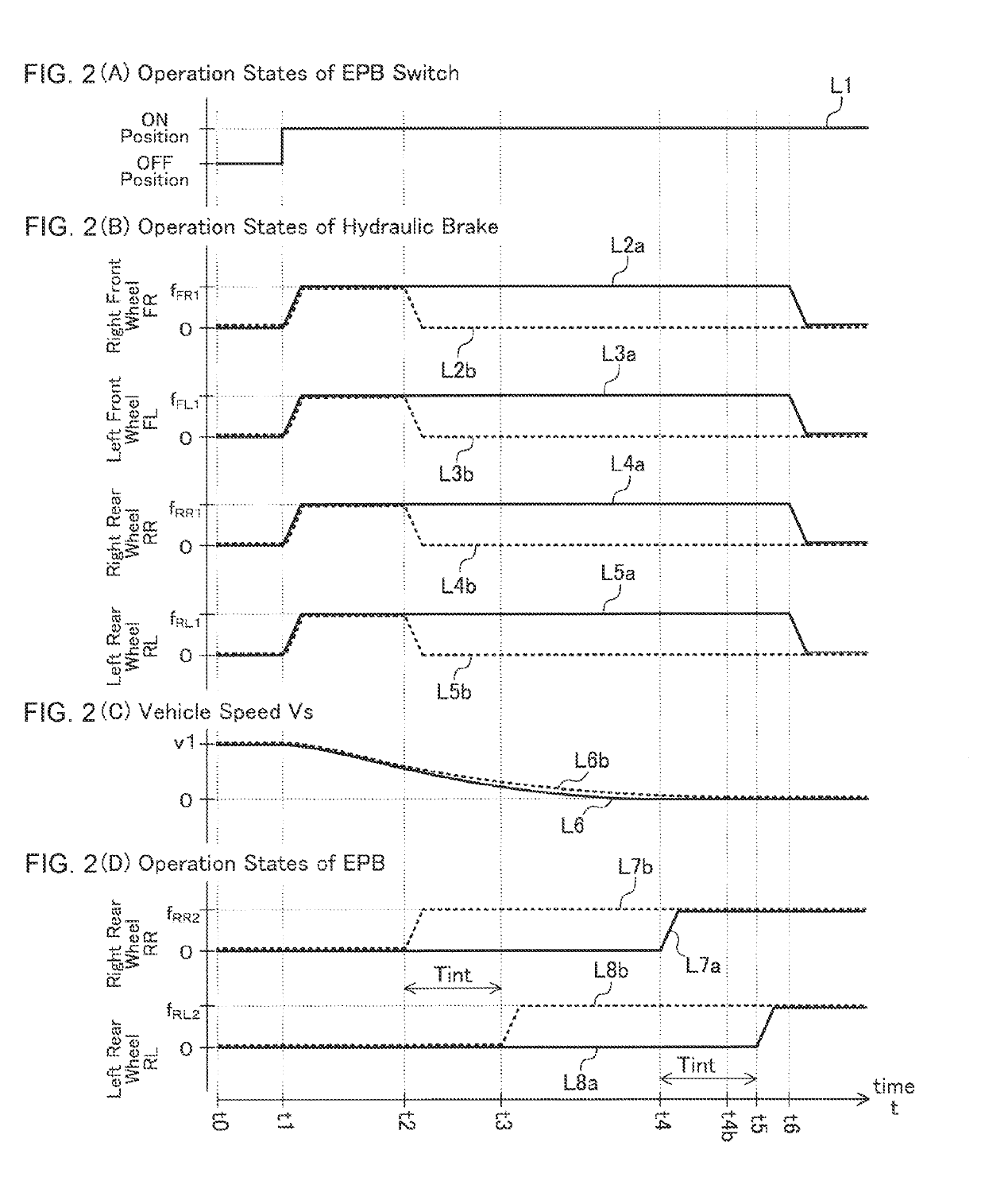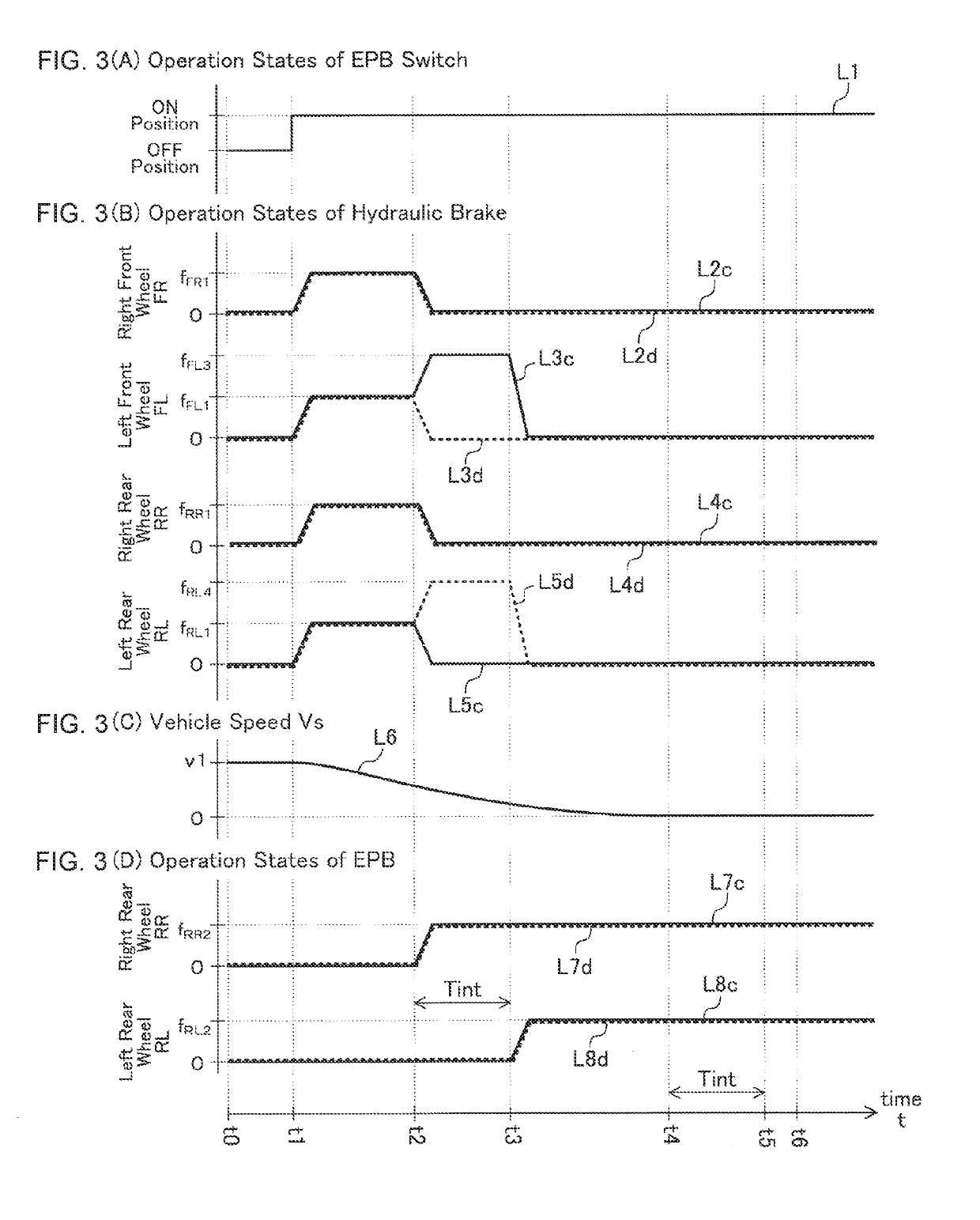Vehicle brake control apparatus
a technology of brake control and brake pedal, which is applied in the direction of brake components, failure-safe aspects, braking systems, etc., can solve the problems of excessive motor electric current, rush current, and inability of electric parking brake apparatus to generate braking force at both rear wheels
- Summary
- Abstract
- Description
- Claims
- Application Information
AI Technical Summary
Benefits of technology
Problems solved by technology
Method used
Image
Examples
case b
[0153](Case B) In a case where the ON operation of the EPB switch 60 is performed while the vehicle 10 is traveling / moving
[0154]It is assumed that the ON operation of the EPB switch 60 is performed while the vehicle 10 is traveling / moving afterwards. Namely, it is assumed that the present point in time is the time point t1 in the timing charts of FIGS. 2(A)-2(D). In the present assumption, it is also assumed that failure of the hydraulic brake 30 is not detected (namely, the hydraulic brake malfunction wheel is not detected) while the EPB stop process is in execution, and the OFF operation of the EPB switch 60 is not performed during a time period from the start of the EPB stop process to the stop of the vehicle 10.
[0155]In this case, the CPU makes a “Yes” determination in step 430 and proceeds to step 435 so as to set the value of the EPB stop process execution flag Xes to “1.” Subsequently, the CPU proceeds to step 440 so as to control the hydraulic brake 30 such that braking forc...
case c
[0165](Case C) In a case where the OFF operation of the EPB switch 60 is performed during execution of the EPB stop process
[0166]It is assumed that the OFF operation of the EPB switch 60 is performed during a time period from a time point at which the EPB stop process is started to a time point at which the vehicle 10 actually stops.
[0167]In this case, the CPU makes a “Yes” determination in step 525 and proceeds to 530. As a result, execution of the EPB stop process is aborted.
case d
[0168](Case D) In a case where the four wheels are detected as the hydraulic brake malfunction wheels during execution of the EPB stop process
[0169]It is assumed that all of the four wheels (namely, the left front wheel FL, the right front wheel FR, the right rear wheel RR, and the left rear wheel RL) are detected as the hydraulic brake malfunction wheels during the time period from a time point at which the EPB stop process is started to a time point at which the vehicle 10 actually stops.
[0170]In this case, since the specific condition is satisfied, the CPU makes a “Yes” determination in step 510 and proceeds to step 515 so as to set the value of the specific brake process execution flag Xoe to “1.” Subsequently, the CPU proceeds to step 520. In step 520, the CPU executes a “specific brake start process routine” represented by a flow shown chart in FIG. 6.
[0171]Specifically, the CPU starts the process from step 600 of FIG. 6 and proceeds to step 605 so as to determine whether or n...
PUM
 Login to View More
Login to View More Abstract
Description
Claims
Application Information
 Login to View More
Login to View More - R&D
- Intellectual Property
- Life Sciences
- Materials
- Tech Scout
- Unparalleled Data Quality
- Higher Quality Content
- 60% Fewer Hallucinations
Browse by: Latest US Patents, China's latest patents, Technical Efficacy Thesaurus, Application Domain, Technology Topic, Popular Technical Reports.
© 2025 PatSnap. All rights reserved.Legal|Privacy policy|Modern Slavery Act Transparency Statement|Sitemap|About US| Contact US: help@patsnap.com



